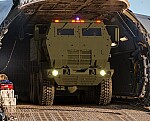Made in Gaza
Where does Hamas obtain its weapons? Some of them originate from Iran or even from remote parts of the world and make their way into the Gaza Strip through tunnels that cross borders. Nevertheless, terrorists are increasingly capable of manufacturing more and more weapons directly within the Gaza area.
The Israeli army discovered an extensive arsenal of weapons among eliminated Hamas terrorists after attacks on Israeli territory. The found weapons included RPGs, mines, anti-aircraft rockets, grenades, and various explosives, including devices capable of penetrating armor with magnets, as well as various types of assault rifles. The army acknowledged that it was surprised not by what the terrorists had but by the fact that they managed to bring such a large quantity of weapons into Israeli territory. The terrorists had planned to stay for an extended period and brought supplies of food and medical supplies with them.

The Israeli army reports that most of the seized weapons were manufactured directly in the Gaza Strip, but some pieces suggest that weapons are also coming from the other side of the world. Hamas began importing rockets, explosives, and other weapons from Iran after Israel's withdrawal from Gaza in 2005. These were shipped by sea to Sudan, loaded onto trucks, and transported through Egypt to the Gaza border, where they are smuggled through a network of tunnels. Reuters, citing sources in Western intelligence agencies, describes how Hamas has built a "mini army" over 18 years, with its military academy teaching various specializations, including cyber warfare and naval operations. Currently, this "mini army" is said to have around 40,000 fighters, four times more than Hamas had in the 1990s. Smuggling resources from abroad has been crucial for arming this army, with the methods evolving over the years.

The recently seized weapons included items identified as North Korean products, such as the North Korean version of RPG F-7 and the Kalashnikov-type 58 assault rifle. This discovery is reminiscent of a 2009 incident when Thai authorities detained a North Korean cargo plane carrying 35 tons of weapons during a refueling stop in Bangkok. Initially destined for Iran, it was later revealed that the delivery was intended for Hamas. Some of the weapons found in the seized arsenal were of Iranian origin.
The support for Israel's military actions in Gaza from Western nations remains steadfast, despite criticism from the Global South, which often emphasizes the plight of Palestinian civilians trapped in the conflict zone and assigns blame to the West.
The complex smuggling routes for weapons into Gaza, including the use of tunnels and potentially underwater tunnels, underscore the sophistication of arms smuggling operations. The Israeli army discovered an underwater tunnel in 2016 and conducted an airstrike on it in subsequent years. Hamas invested significant resources in building such tunnels, enabling covert movement between the sea and land, with numerous fighters equipped with civilian diving gear for stealthy underwater travel.
While the smuggling of finished weapons from abroad was once a significant source of arms for Hamas, it has shifted to the background over time, with the primary source of weapons now being local production within the Gaza Strip. Hamas leaders, including Ali Baraka, have confirmed the existence of their own factories producing various weapons, including rockets with different ranges, mortars, Kalashnikov rifles, and ammunition, all manufactured with the permission and support of Russia. However, even in their local production, smuggling materials plays a crucial role, with Iran being a significant contributor in terms of both materials and production expertise.
According to a 2020 report from the U.S. Department of State, Iran provided Palestinian groups, including Hamas and Islamic Jihad, with $100 million in one year. An unnamed source from Israeli intelligence services stated that this amount increased to $350 million in the following year.
Iran openly acknowledges its support for Hamas, even praising recent attacks. The highest spiritual leader, Ali Khamenei, applauded anyone involved in planning the attacks. The Jerusalem Center for Public Affairs article highlights creative methods used by Hamas to smuggle resources for weapon production into Gaza, such as smuggling drones amid shipments of children's toys, diving equipment hidden among clothing, and tons of materials suitable for explosive production concealed among 40 tons of salt.
These methods include scavenging materials from Israeli munitions, using water pipes, and collecting any usable metal scraps, showcasing the resourcefulness of Hamas in acquiring materials for weapons production.









